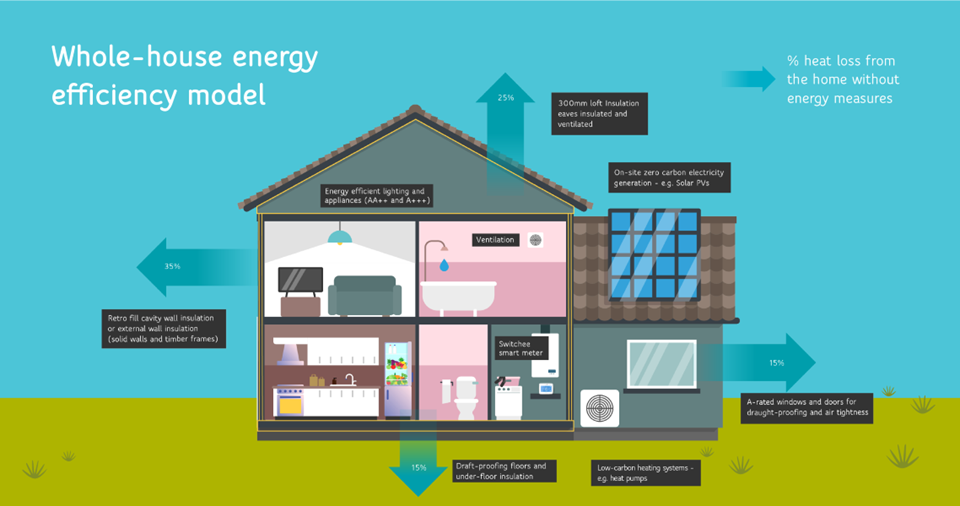Creating energy efficient homes
Our journey to Net Zero Carbon
Across the Samphire Homes area, we're installing energy efficiency measures in our homes, to ensure that energy bills are as low as possible for our tenants and to reduce our carbon emissions. These measures might include insulation, installing more efficient doors and windows, and replacing heating systems with low carbon alternatives such as Air Source Heat Pumps (ASHPs).
Energy efficient measures
There are lots of different ways we can improve the energy efficiency and cost of running of your home, and we'll work with you to decide which measures are best. Take a look at our whole-house model below to find out what measures we could use in your home and how these work.
Air Source Heat Pumps (ASHPs)
An Air Source Heat Pump transfers heat from the outside air to water, which heats a room via the radiators. The heat pump also heats water in a hot water tank for taps and showers.
Ground Source Heat Pumps (GSHPs)
A Ground Source Heat Pump transfers heat from the ground to water, which heats a room via the radiators. The heat pump also heats water in a hot water tank for taps and showers.
Solar PV
Solar electricity panels, also known as photovoltaics (PV), is a renewable energy source that captures the sun’s energy and converts it into electricity that is used in the home.
Insulation (wall, floor and loft)
Cavity Wall insulation is injecting into the walls of a home. Cavity wall properties have a gap in-between the bricks where insulation can be added.
Underfloor insulation is only used in suspended floor properties. This is a foam type insulation which is sprayed on the underneath of the floorboards. You can tell if a property is suspended as it will sound hollow when walked on.
Loft insulation is most commonly laid along the floor of the loft. This should be between 200 - 300mm thick.
Airtightness (doors and windows)
This looks at how much heat escapes a property through the windows and doors. Not only does the age affect this but also the type of material a door is made from. A timber door will loose significantly more heat than a modern composite door.
Efficient lighting
Changing your lighting is one of the easiest measures to make a home more energy efficient. Low energy lightbulbs can be purchased in DIY shops and most supermarkets.
Ventilation
By utilising ventilation, through either trickle vents in windows or extractor fans, will help to reduce the risk of condensation and damp & mould. Ventilation also ensures good air flow around the property, allowing stale air to be replaced with fresh air from outside.
Smart meters
A smart meter can be a useful tool to help you keep track of your daily energy usage. Being able to automatically see how much gas and electricity you’re using helps you to adopt good energy habits and make changes that could save you money.

What are the benefits?
There are many benefits of installing energy efficient measures in your home, as not only are these measures positively impacting the environment, but they may also help to lower your energy usage and bills.
- Reducing the risk of damp and mould
- Preventing draughts and heat loss
- Lowering energy usage and the cost of running your home
- Improving ventilation to create better indoor air quality
- Reducing the risk of health problems associated with a cold home
What will the journey look like?
During your journey you'll be assigned an expert Retrofit Coordinator based on your needs, who will act as your single point of contact throughout – though there will likely be other contractors involved depending on the expertise needed for your home specifically.
Whilst each retrofit journey has the same aim to improve energy efficiency and savings, every process will be unique, and measures used will be tailored to the needs of you and your home. Take a look at our guide below to find out more.
Useful guides
If you’d like some more information about each of the energy efficiency measures above, check out the helpful guides below:







